my ultralight backpacking crisis
cutting a toothbrush in half is a cry for help + fantasy book reviews
Can you feel it in the air? Longer days, sweet yellow light, the sound of rain on your window?
I’m dusting off my backpacking gear. I’m dreaming of camping on a beach and waking up to fog in the morning, of living out of a backpack. A small backpack. Who needs a tent anyways? Maybe a tarp will do.
oh hey there! This newsletter contains affiliate links. That means if you choose to make a purchase I make a small kickback at no additional cost to you.
My Ultralight Backpacking CrisisI’m not even really a backpacker to be honest.
I’m a sea kayaker through and through, drawn to the appeal of the water and the way the coasts feel alive. For me, the perfect cove campsite, the oceanside waterfall, the fjord, the sea cave, the cliff, has more draw than the summit.
In a sea kayak you don’t need to worry quite so much about space with three times the volume of a backpacking bag to work with. This isn’t to say space is infinite— it isn’t.
I’ve been working as a sea kayak guide for a while and after a personal record number of nights out guiding last summer I had my own kayak kit slimmed down to just barebones— a small tent, a sleeping pad and bag. A set of clothes to paddle in; a pair of pants for camp, a wool baselayer top, a thin jacket, a raincoat, shorts, and one pair of shoes. My paddling gear, a first aid kit. Three drybags— one for clothes, one for electronics, one for my sleeping bag. A backpackers camp stove and fuel. An ultralight pot, a mug, a spork, a knife. An external battery and a camera. Socks. Food. I’ve found I don’t need much beyond that.
Accidentally, I’ve become a bit of an ultralight kayaker— less stuff is easier to manage. I’m happiest when I’m responsible for the least amount of material items. I like being able to strip down my life to the bare essentials, stuffed in a kayak.
And lately, more and more I like the idea of boiling my life down to just the things I can carry on my back. I like the idea of walking and sleeping in the dirt. (Probably, that’s a cry for help).
The Midwest Has Great Backpacking (no, actually)
But Maddy, you live in the Midwest. Where do you think you’re going backpacking? Oh boy, do I have news for you! We actually have some pretty great backpacking trails in the Midwest. Here are just a few of my favorite finds:
The Porcupine Mountains
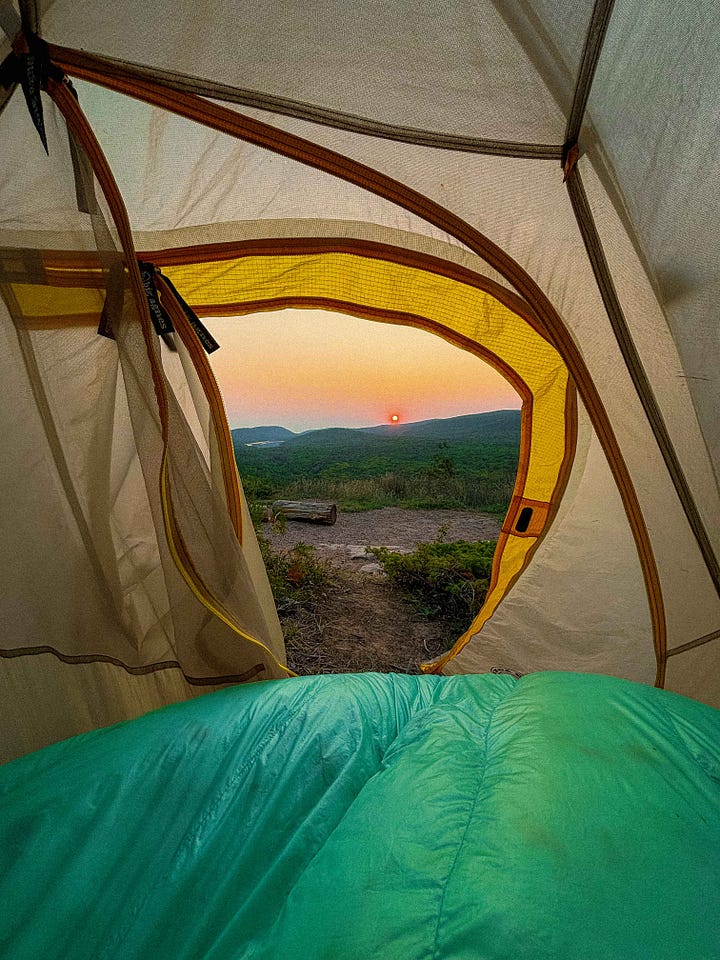
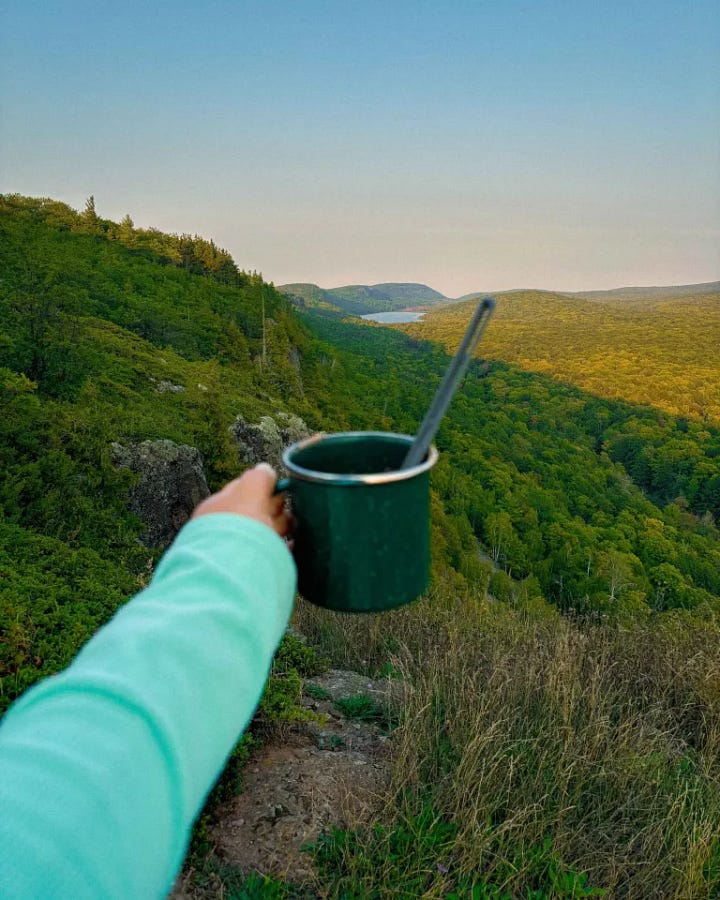
READ: Ultimate Guide to the Porcupine Mountains
One of the best places for beginners to dive into backpacking in my opinion. You can check in and talk with a ranger before heading out, it has some of the best scenic campsites around, and the terrain is well-trodden and has fairly easy footing. Permits required; no cell service.
The Superior Hiking Trail
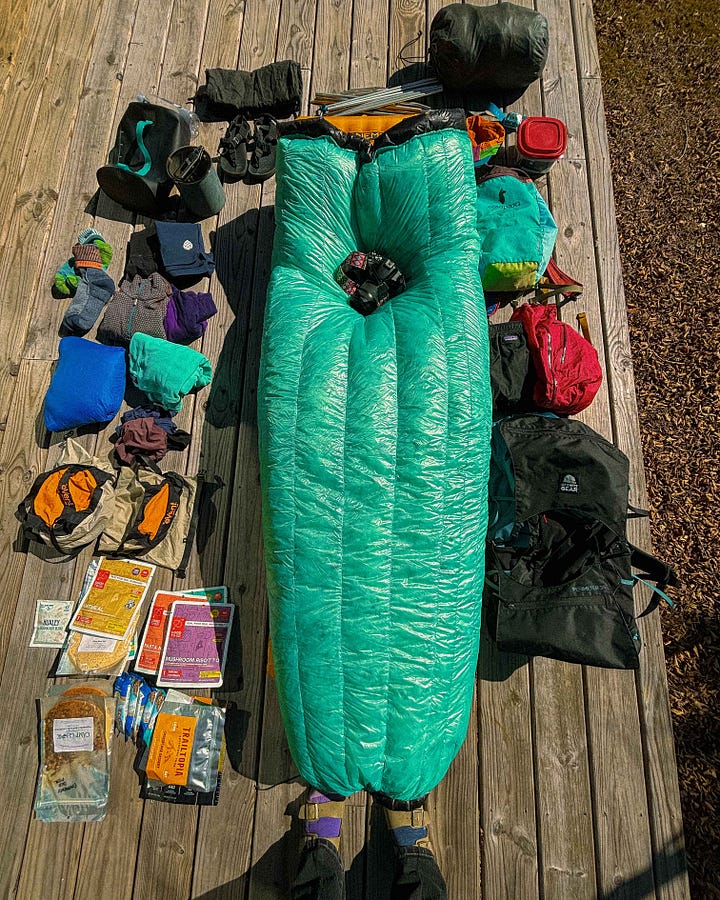
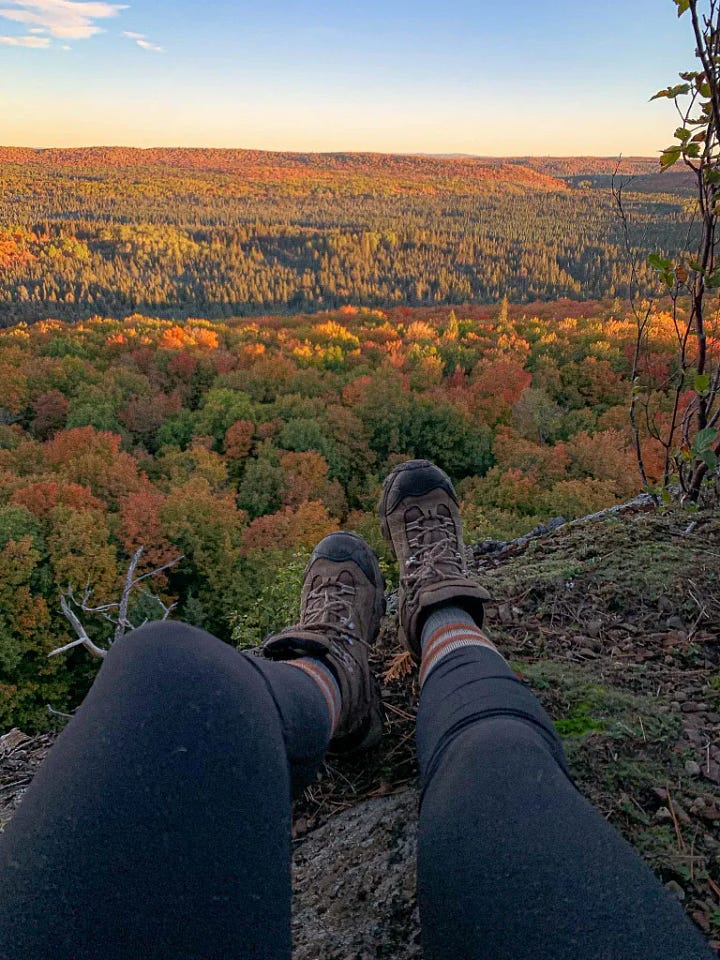
READ: Best Hiking North Shore MN
The Superior Hiking Trail is a difficult thru-hike, but easier weekend segments can be carved out for those not looking for a full month of suffering. Come for the views, stay for the calf-burning ascents, waterfalls, hidden lookouts, wildlife, moose, and general suffering. You can’t lose.
The Ice Age Trail
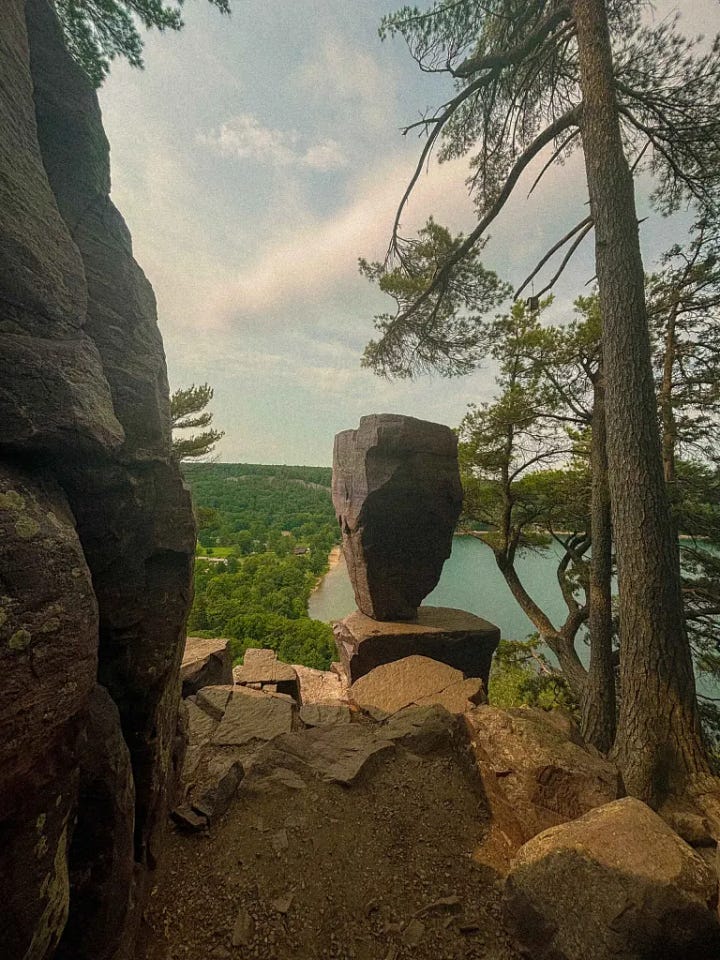
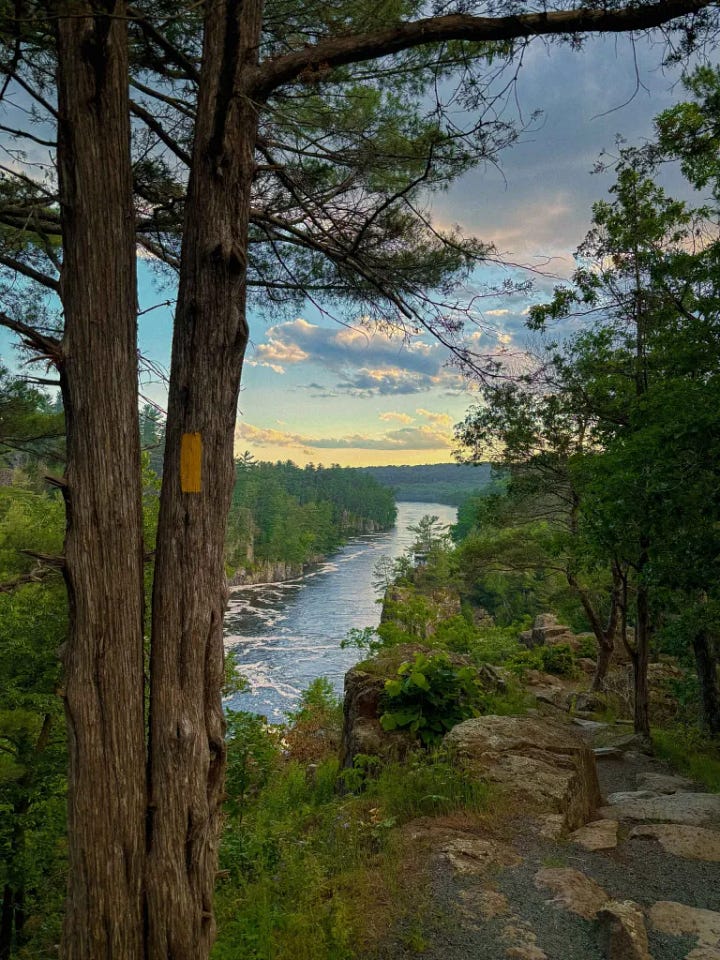
I’ve only popped out short sections of the Ice Age Trail, but this Wisconsin thru-hike follows the line marking the southern extent of the glaciers in the most recent Ice Age; you’re basically hiking 1000+ miles on a glacial moraine, and that’s pretty cool.
The Shawnee National Forest
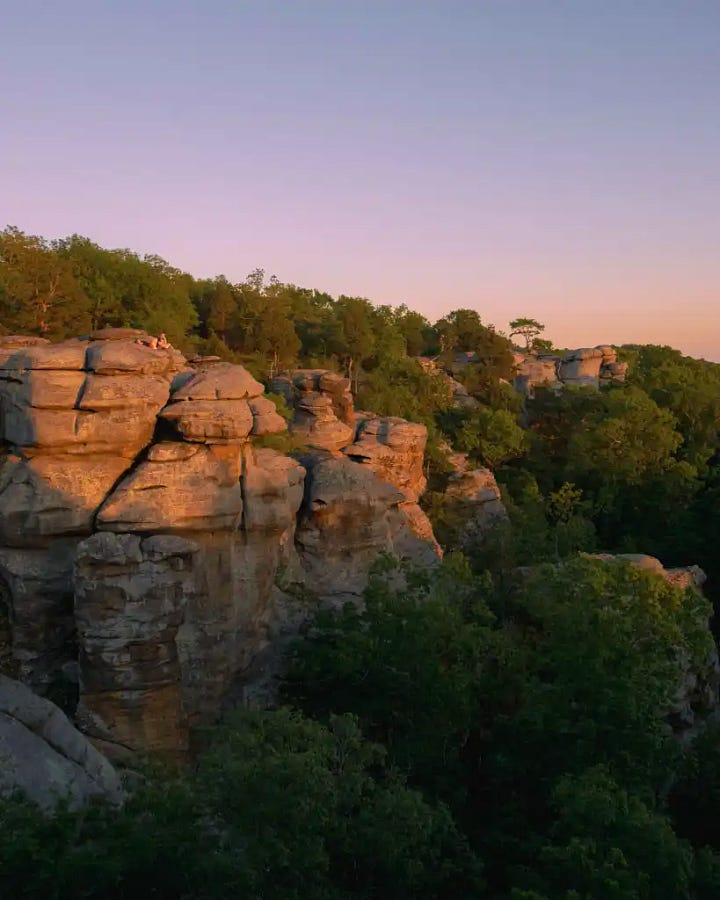
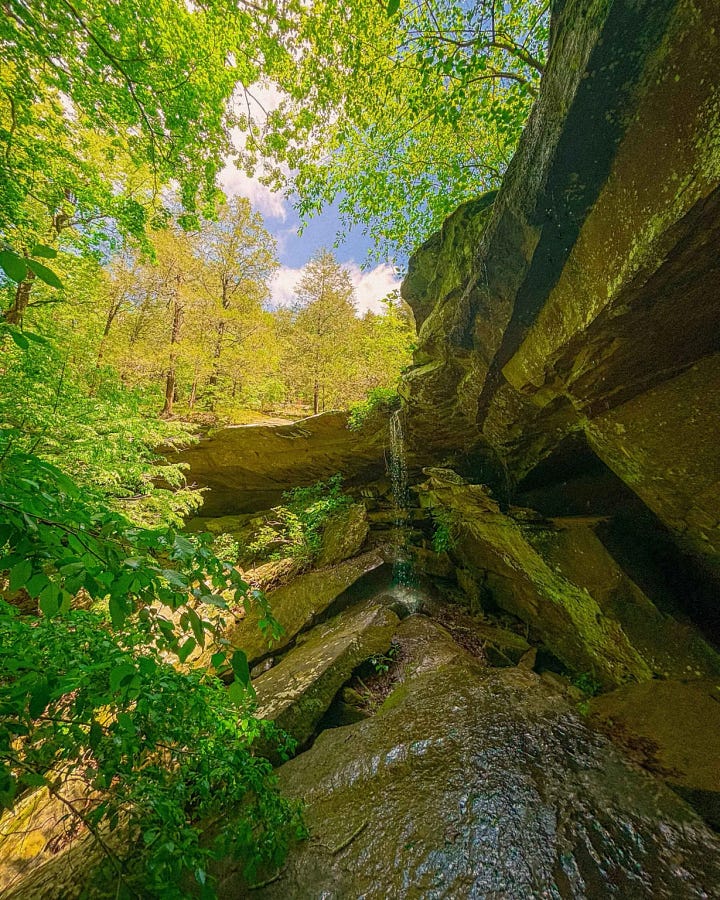
READ: Weekend Guide to the Shawnee National Forest
Southern Illinois’ Shawnee National Forest has waterfalls, weird geology, interesting canyons, wildlife, and a general land-before-time feel that I really love. There’s a number of backpacking trails that wind through the National Forest but on my solo road trip I wasn’t quite brave enough to venture into the woods alone outside of my home turf of the Lake Superior Basin.
Small Business Spotlight: Wild Brush
Looking for the Ultralight pack of your dreams? Julianne at Wild Brush sews some of the raddest Ultralight backpacks, hip packs, bike packs- you name it- on the market. Wild Brush is a small, two-person show so buying from them is a great way to support up-and-coming artists and makers. Their bags are designed by an outdoorsy person, for outdoorsy people.
Here I am rocking my hip-pack (get your own here, only 2 available!). Stock for Wild Brush packs are SUPER limited which is part of what makes this small business so neat.
On a personal note, Julianne is one of my first internet friends, and I’ve regularly swapped hand knits I’ve made for her in exchange for packs, which is super fun! Julianne also recently started a Substack Larkspur & Leaves which I’m enjoying so much and highly recommend!
How to Make Engaging Backpacking Content
The internet can definitely feel overloaded with content, but that doesn’t mean there isn’t space for new people who love storytelling to get a foothold. Honestly, like with anything, the best thing you can do is start. But beyond just starting, here are three quick tips to make your backpacking/adventure content a hit:
The best content tells a story. Across platforms, on Instagram, in photos, in video, or through written word, identifying a story within your trip can make for the most compelling content. Did you get terrible blisters and quit early? That’s a story. Did you hardly sleep a wink because you still can’t stand sleeping outside alone? Did nothing go wrong, expect that you were hoping to get something out of the trip that you didn’t?
You need a thesis statement. Or in the world of viral content, you need a hook/clickbait. For example “Let me tell you about the view I ripped holes in my feet for”, or “I love backpacking, but I hate sleeping outside alone”, or “I wanted something out of this stupid backpacking trip that was unattainable”. Try and tell the root of your story in one, dramatic sentence that can be your headline or your video hook. People tend to decide whether or not they're going to read/watch your work pretty much in the first six seconds of encountering it.
Recycle content. While it pays to be active on several platforms (for me that’s mostly Instagram, Substack, and Wordpress), that doesn’t mean you have to come up with fresh content every time, all the time. For example, the section above “The Midwest Has Great Backpacking, no really” is adapted from an existing blog post. That same post could also be broken down pretty easily into an Instagram post or video by either reading out the list as a voiceover, or posting an image for each and breaking down the info as text-over or in a caption. Either way, your content and stories can live on multiple platforms, which essentially means you only have to write the root story/article once, and then you can reuse the idea throughout your editorial calendar.
An editorial calendar you may ask? Yeah, life changing. Plan out your content, especially if you have more than one platform, so your story ideas are supporting each other. For example, if I write a piece on my soloMidwest Road Trip for Substack, I can then recycle that into social media posts and blog posts around the same time the initial post goes live.
Reading list:
The Invisible Life of Addie LaRue
I just finished The Invisible Life of Addie LaRue and wow, it's been awhile since i've read a book that felt like it had a genuinely new and well-written concept. I feel like it has real modern-classic potential.
Granted, I usually read either heavy nonfiction or romantasy (see below).
I really loved the prose and the themes repeated throughout. Controversial opinion, but I loved Addie, the main character. I actually don’t think she was all that selfish. I think in order to have a main character be 23, they have to be a little unlikeable around the edges. In the words of modern philosophers Blink-182, nobody likes you when you’re 23.
I read Quicksilver at your recommendation and… pardon?
Objectively, I enjoyed this book. Entertained? Absolutely. Kept reading for an ungodly amount of time? No problem. Will I read the sequel when it’s out? I fear that for sure I will. Is it objectively a good book? I think that depends by which metric you define good. The entire last quarter of the book left me literally concerned I had accidentally picked up a different book entirely, with no warning. It seemed as if the author was also discovering the plot for the first time while writing it along with me. Novel! Plot holes? Oh, we got them.
That said, five stars for laugh out loud value. Five stars for keeping me entertained the entire time. Five stars for characters I started out hate-reading then grew on me a little. The romance was genuinely comical at best, and I actually found that pretty fun as well (also who names a main love interest Kingfisher? That is a bird). If you’re looking to turn off your brain for a little while and sink into a wild ride that makes very little sense but has pretty high enjoyment value, hey! Go for it, I sure did.
What makes a good book anyway?
I’ve been spending a lot of time on BookTok, or rather Bookstagram I guess, and one thing I’ve noticed that’s really interesting is how pretentious readers are.
And listen, I’m a reader. More when I was younger than now, and I’ll be honest, when I was 23 and wanted to be an essayist and only read “real” literature I totally thought it made me smarter than everyone else. (Nobody likes you when you’re 23 and good god I was annoying. Sorry.) I totally looked down on people who read popular romance.
But in the last few years I fell off the reading wagon, dragging myself through the occasional poetry collection and the nonfiction books that feel like learning (because I had to be productive even in my leisure), and ultimately it was reading A Court of Thorns and Roses that got me back on it.
And now, I read popular fantasy and romance, because it’s entertaining and I enjoy it. And actually, I’ve found that reading romance even when it’s easy, nonsensical stories, uses my imagination and has made it a lot easier for me to pick up some of those denser nonfiction titles.
But who is to really say what a good book is? Can there ever even be a truly objective measure of “good” art? I sort of think no. If you enjoy it, then it’s good. Taking a rubric to something like a book sucks the joy out of it.




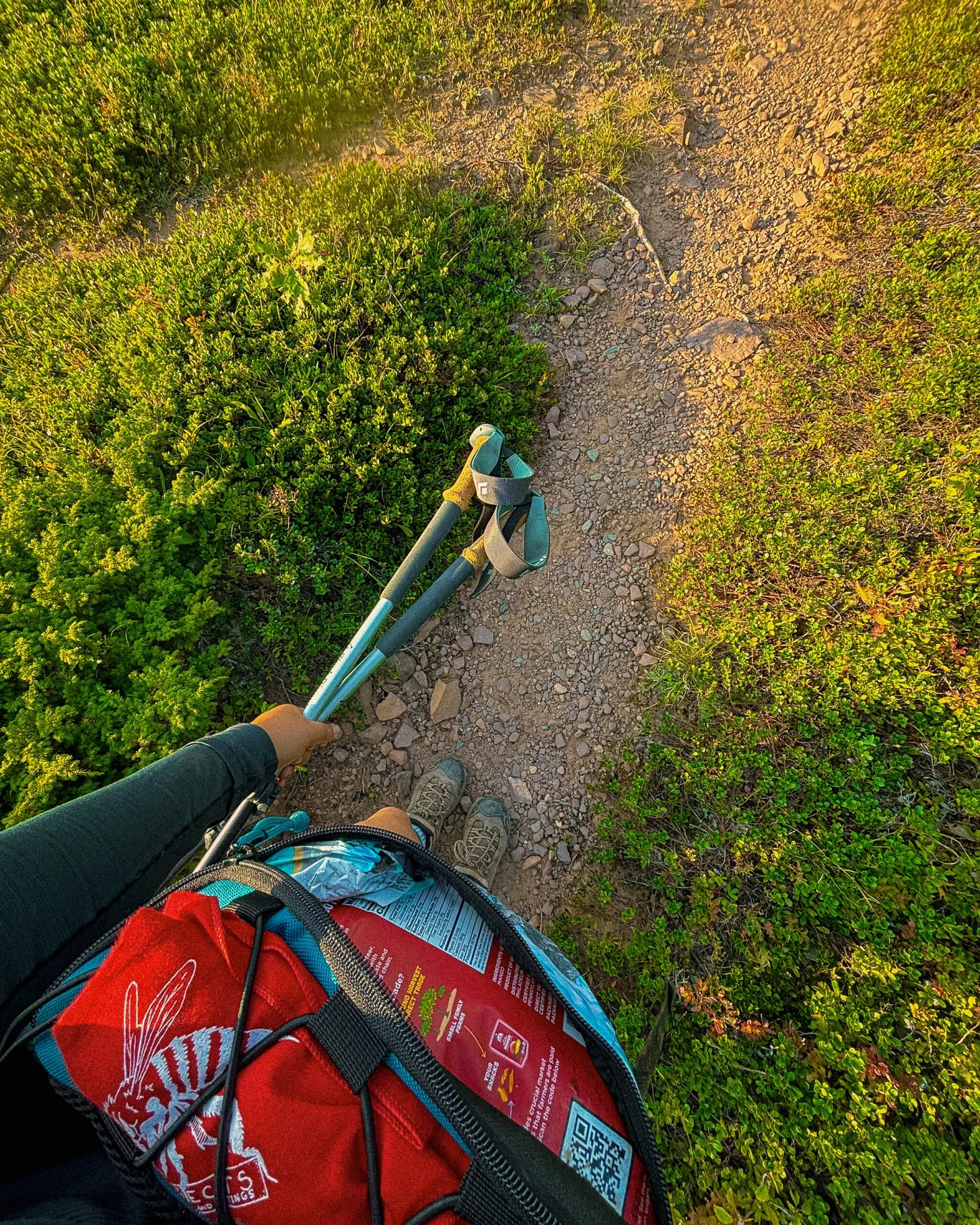
"And now, I read popular fantasy and romance, because it’s entertaining and I enjoy it." - this! My favorite thing is to be outside while I read... not necessarily read *about* the outdoors.
Did you just circle blogging/influencer/content creation back to having thesis statement? Every freshman comp professor’s dream!!! (I do teach college, and often talk about having a thesis for your writing, but I don’t teach freshman comp).